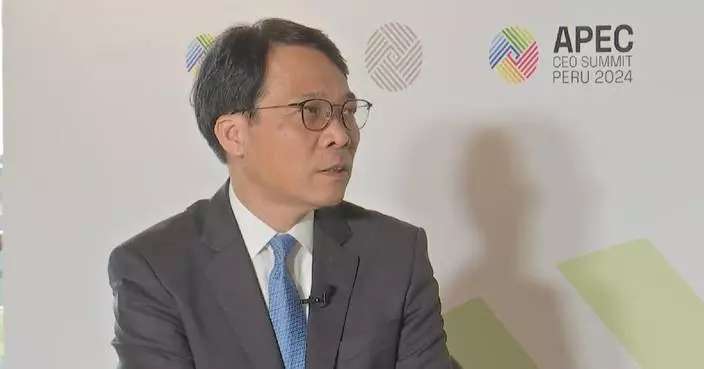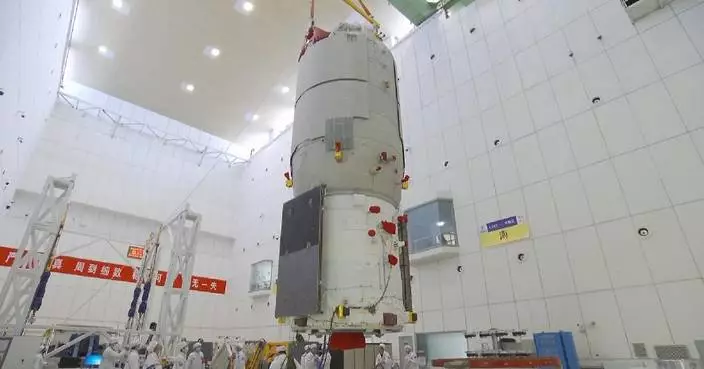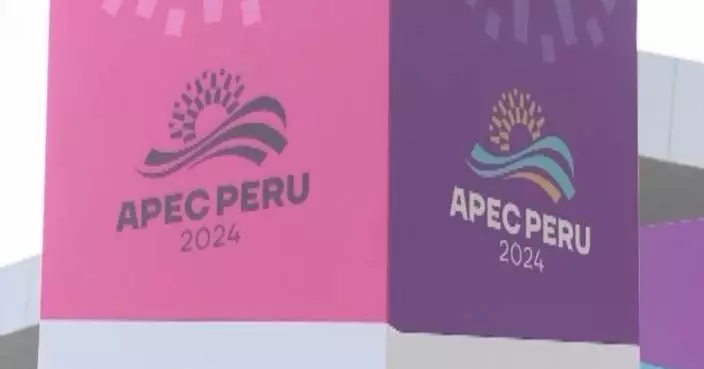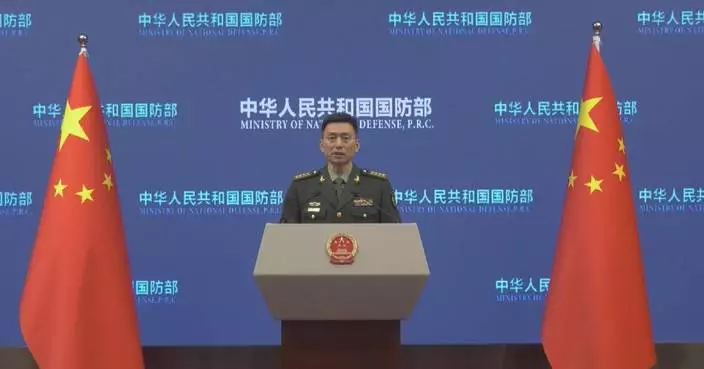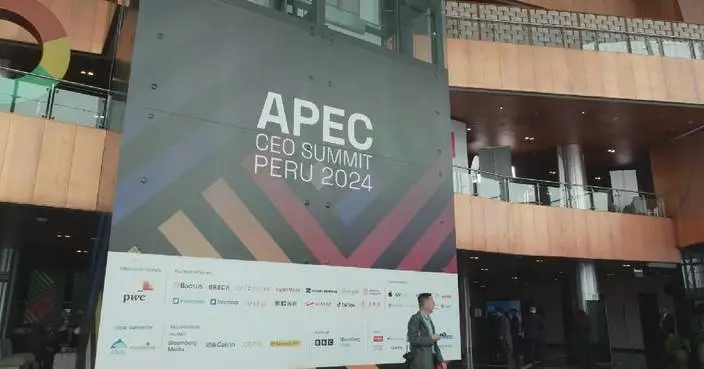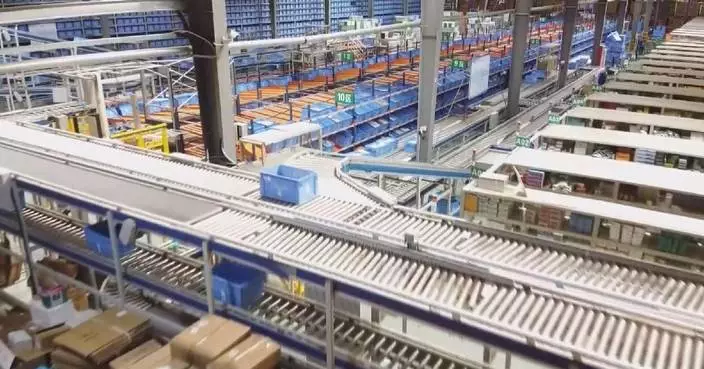China's Tianzhou-8 cargo spacecraft brought over 80 products for 36 scientific experiments to the orbiting Tiangong space station to support subsequent space science projects and application tests.
The payload for experimental use, weighing around 460 kg, includes 18 cargo bags and one set of cell life support device, covering experimental units and samples and other support materials.
"The 36 scientific experiments to be conduced during the Shenzhou-19 mission cover fields such as life science, fluid dynamics, combustion, and materials science, with a special focus on life science experiments. We will also bring fruit fly and mouse embryo. It will develop for 7.5 days, which corresponds to the developmental process of a long-term embryo after implantation. In fact, we hope to provide theoretical basis and pave the way for the long-term survival and reproduction of humanity in space," said Zhang Wei, researcher at the Technology and Engineering Center for Space Utilization of the Chinese Academy of Sciences.
In terms of space materials science, the Shenzhou-19 crew will conduct over 10 experiments via the container-free materials lab cabinet and the high-temperature material science lab cabinet. In addition, research on protective materials for thin-film solar cells will be carried out using the extravehicular exposure platform.
For the first time, a brick made of synthetic lunar soil will be brought aboard the space station and subject to an exposure experiment to test whether it could be used to construct buildings on the moon. It is expected that the lunar soil brick will be returned to Earth by the end of next year, following the experiment.
"What we are most concerned with are: first, its mechanical properties, as they are most closely related to building structures; second, its thermal properties, particularly how well it performs in terms of insulation and heat resistance; third, the impact of radiation on it. We want to know if these lunar bricks can withstand the exposure to cosmic radiation," said Zhou Cheng, professor, National Center of Technology Innovation for Digital Construction, Huazhong University of Science and Technology.
Astronauts will also test the space application of latest technologies. That includes in-orbit verification of the adjustable radiation resistance of new-type storage chips.
China launched the cargo craft Tianzhou-8 from the Wenchang Satellite Launch Center on Friday night to deliver supplies for its orbiting Tiangong space station.

Tianzhou-8 cargo spacecraft sends over 80 experimental items into space
East China's Suzhou and Peru's Chancay were formally linked as sister cities during Chinese President Xi Jinping's talks with Peruvian President Dina Boluarte in Lima on Thursday.
Known for its pavilions, towers, bridges and flowing water, Suzhou has been selected as the most attractive Chinese city in the eyes of foreign experts for 12 consecutive years. It has established sister city partnerships with 59 international cities, the latest Chancay, Peru, on the other side of the Pacific Ocean.
The Port of Chancay was officially opened by the heads of state of China and Peru on Thursday evening. Earlier in September, the first cargo ship was dispatched to the China-built Port of Chancay from the Taicang Port of Suzhou.
During China's Ming Dynasty (1368-1644), navigator and diplomat Zheng He (1371-1433) set sail from Taicang to carve out China's ancient maritime Silk Road. Today, this port remains crucial for trade, domestic and international. In September and October this year, two ships carrying more than 160 sets of port-related equipment set sail from Taicang Port to the Peruvian port of Chancay.
"In the past, many routes from China to Latin America had to pass through the Panama Canal. Now that the Port of Chancay has opened, the entire voyage from the Yangtze River Delta to Peru can be shortened by about 10 days, and the shortest time to transport goods to the Port of Chancay is 23 days," said Wang Minyong, director of the Jiangsu Taicang Port Management Committee's Development and Services Bureau.
A 10-day shortening of the voyage means that the shelf life of some goods can be extended by 10 days, resulting in lower logistical costs and smaller risks.
At present, Taicang Port has two customized liner routes to eastern and western South America.
The commodities exported from Taicang to Peru mainly include vehicles and engineering equipment. From January to October this year, the number of cars exported from Taicang Port has exceeded 120,000 units, covering 28 Latin American countries and regions, an increase of more than 40 percent year on year.
"Taicang Port is the first automated terminal in terms of container management along the Yangtze River, and we are currently renovating the vehicles and cranes to make it a quasi-automated port. Chancay Port, as a newly built port in Latin America, has the advantage of being a latecomer. Its automation level is second to none among all Latin American ports," said Wang.
The ports have brought Suzhou and Chancay closer. Wei Shujie, director of the Suzhou Foreign Affairs Office, has high expectations for future cooperation between the two cities.
"The trade between Suzhou and Peru had been growing. From January to September this year, Suzhou’s trade with Peru totaled 604 million U.S. dollars, a year-on-year increase of 29.3 percent. In the future, we will strengthen communication with each other and deepen cooperation," said Wei.
It is internationally agreed that cooperation between sister cities is formal, comprehensive and long-term. A new corridor of economic and cultural exchanges is now born across the Pacific, between two countries -- and two cities.

China's Suzhou, Peru's Chancay form official sister city partnership




